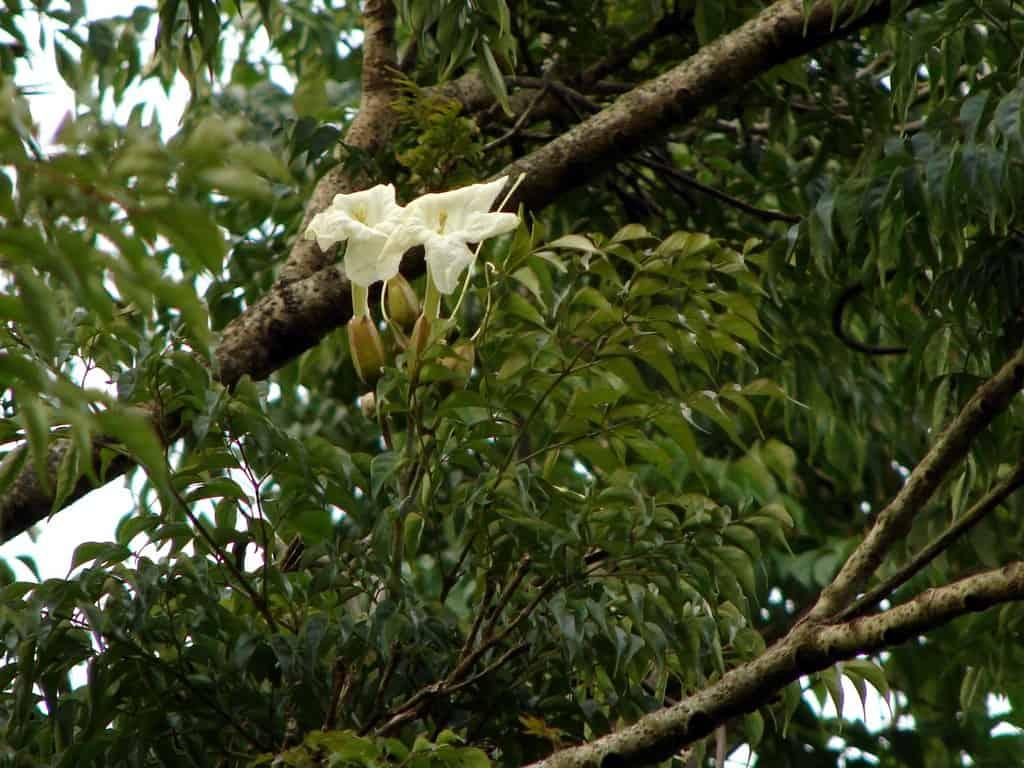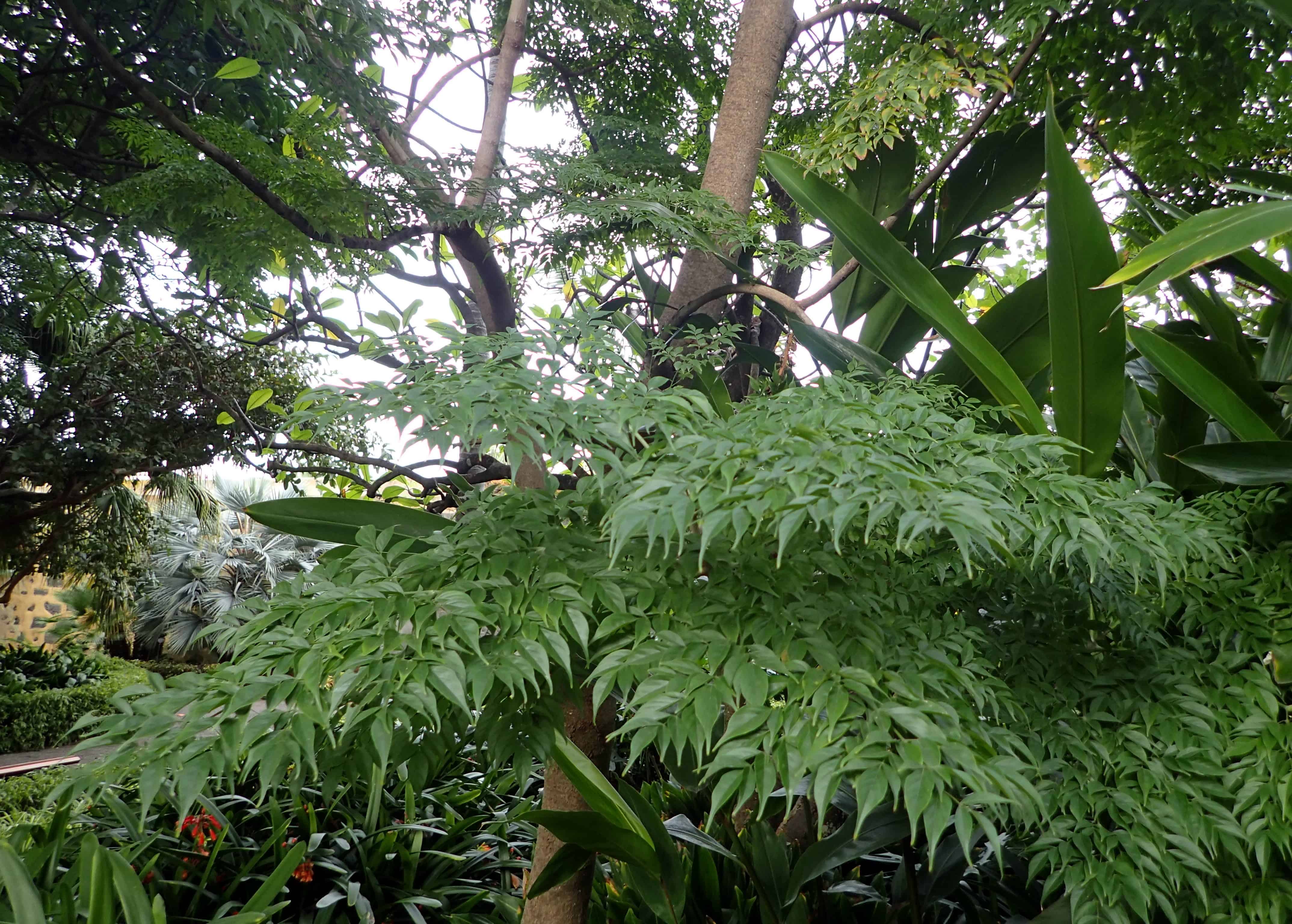No, the China Doll isn’t a literal doll but an evergreen tree, popularly grown indoors for its abundant, glossy-green foliage.
Also known as the Serpent tree or Emerald tree, this plant could grow an average height of 90 feet in its native habitat. But you can also treat it as an evergreen shrub to grow in your indoor garden.
You are watching: China Doll Plant Growing Guide
Although care and maintenance can be slightly finicky, the China doll houseplant is worth growing and keeping. Read on to know more about China dolls.
PLANT NAME: Radermachera sinica
Other Name: China doll plant, Serpent tree, Emerald tree
Plant Type: Evergreen perennial tree/shrub
Native Areas: Subtropical Southeast Asia
Light Requirement: Bright indirect light
Watering: Moderate; water when the soil is 50% dry
Fertilizer: Fertilize monthly during Spring and Summer with balanced liquid fertilizer
Toxicity: Non-toxic to pets and humans
Temperature: 65-75 F (18-24 C)
Propagation: Stem tip cuttings
Growth: Fast-growing plant
Soil Type: Moist but well-draining soil
More About China Doll plant
Native to Southern China and Taiwan, the China doll plant is a fast-growing species of an evergreen tree that you can grow as an indoor plant. The plant thrives in a tropical and subtropical climate, giving off beautiful lacy-looking, green leaves.
Read more : Care Of Peace Lilies As Houseplants
Although China doll plant produces flowers, it rarely blooms indoors. Hence, its main attraction is its foliage.
A mature China doll houseplant may grow an average height of four to six feet high. It has woody stems and an upright growth habit. The plant’s growth tends to spread in all directions. So, it requires regular pruning to keep it bushy and full.
China Doll Plant Care

To maintain a healthy China doll plant, keep in mind that you need to maintain specific growing conditions. If you compromise these basic requirements, your vibrant doll plant will turn dull.
Here’s what to remember to make your China dolls thrive indoors.
Soil
A China doll plant would be happy with the regular potting mix intended for houseplants. But to prevent root rot, well-draining soil is necessary. If you think the mix lacks aeration, you can always amend it with perlite and sand.
These materials make the potting mix porous and well-draining.
It’s a general rule for potted plants to have a well-draining mix to prevent soggy soil. The same thing applies when you grow China doll plants.
Light

Plenty of light is what makes China doll plants grow fast. If taken as a houseplant, it needs exposure to bright indirect light most of the day. It can also benefit from direct sunlight in the morning but may require some partial shade during the hottest part of the day.
During times of low light conditions, use artificial plant light to supplement the light needs of your China doll plant. Don’t forget to rotate the plant so all parts get equal exposure to light.
Watering
Keeping China doll plants hydrated is important to keep the leaves plump and vibrant. Although it loves consistently moist soil, you should avoid overwatering because root rot will be a huge problem.
Here’s a watering regime to follow. Give your doll plant a deep soak every watering to maintain moist soil. Then, drain the excess water before putting it back in its location. Let it dry to about 50% before watering again.
Temperature and Humidity

A warm and highly humid environment is crucial for maintaining the China doll plant’s health. The preferred temperature is somewhere between 65-75 F (18-24 C). Avoid placing this plant nearby cold drafts as it can be stressful.
During times of extremely dry environment, you’ll China doll plant will appreciate a daily mist. You can grow your plant outdoors if your area is under USDA hardiness zones 10 to 12.
Fertilizer
Read more : What Temperature Is Too Hot for Cats?
You can feed your China doll plant with water-soluble fertilizer diluted into half or a quarter of its original recommendation. The added nutrients will help support new growth. Do it once a month during the Spring and Summer seasons only.
Another option would be to apply a slow-release fertilizer in the form of compost or other organic materials. One benefit of using a slow-release is you prevent the build-up of excess salt in the soil, preventing the odds of overfertilization.
Pruning
To keep your doll plant in shape, it will need regular pruning. You can pinch off some outgrowths from time to time and you can also trim some branches every few months. Purne above the leaf nodes where you want new growths to sprout.
Propagating China Doll Plants
You’ll easily propagate the china doll plant by taking stem cuttings. Choose the young stems with green color, not the woody parts. Cut a size of about 3 to 6 inches.
Remove the lower leaves, and dip the tip into a rooting hormone for a few seconds.
Insert the stem cuttings into a moist potting mix. Cover the top with a plastic bag to conserve moisture and prevent the stem cuttings from drying. Moisten the soil from time to time. You’ll see new growth within three to four weeks after you propagate the china doll plant.
Potting
China doll plants wouldn’t mind being pot-bound. So there’s no need to regularly repot your plant. However, if the roots start to come out of the holes, and the soil is depleted, you’ll need to give your plant a new home.
Repotting china doll plants is pretty straightforward. Begin by choosing a pot that’s 2 to 3 inches bigger than the old one. Then, prepare fresh soil that’s well-draining and sterile.
Replant your China doll plant in the new container and water it thoroughly after.
Other Similar Plants
Radermachera hainanensis

Also known as the Golden Tree Jasmine, this species is also a native of China and a close relative of the China doll plant. They belong to the same genus and family. As a tree, it grows an average height of 10 to 15 feet tall. It has green, papery leaves and apricot orange-colored flowers.
Radermachera gigantea
This species is native to Thailand and is also a relative of the China doll plant radermachera. It can grow up to 20 feet high when planted in the wild but it can also grow as a shrub plant in a pot. Its main feature is its shiny, dark green foliage.
Radermachera ignea
This is commonly known as the Tree Jasmine, which is also native to Thailand. It grows up to 15 feet high. This tree species is highly popular for its attractive neon orange flowers which hang down along the branches. These flowers produce that Jasmine-like fragrance.
China Doll Common Diseases and Pests
Common houseplant pests such as spider mites, aphids, and mealy bugs may infest your China doll plants. So, it’s best to regularly check the foliage for the presence of any pests and deal with them as soon as possible. You can treat them with neem oil solution, diluted in water, and liquid soap.
Spray over the affected areas repeatedly until the pests are gone.
Diseases such as leaf tip burn and leaf spot may also affect your China doll plant. To keep these diseases away, always keep the foliage dry.
Source: https://gardencourte.com
Categories: Outdoor


